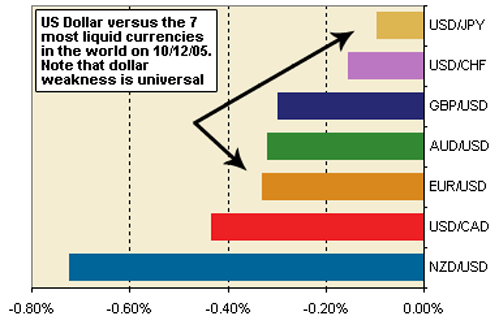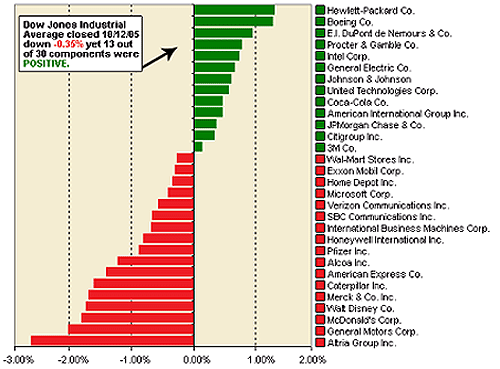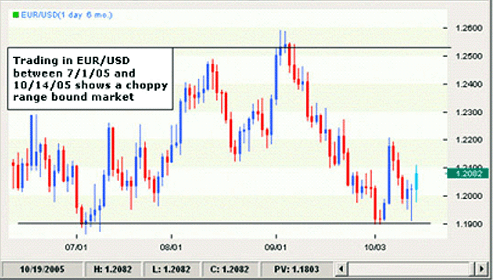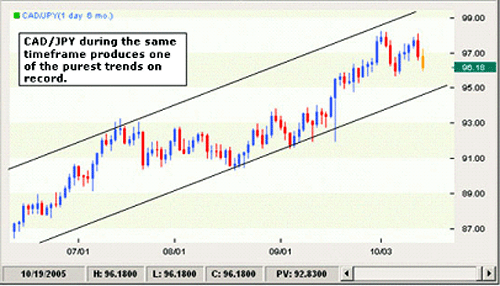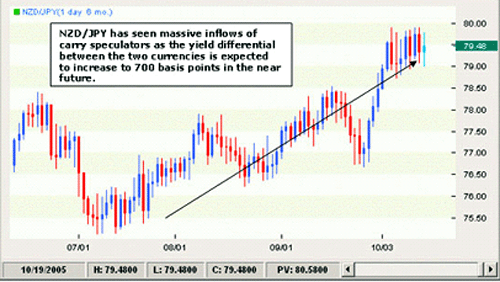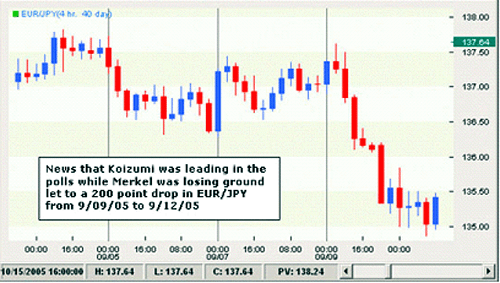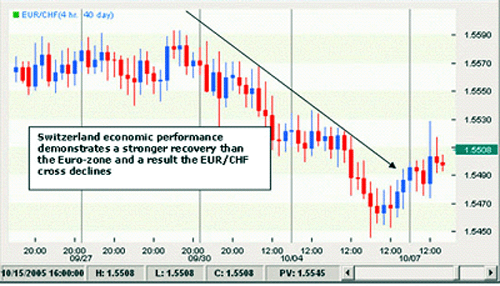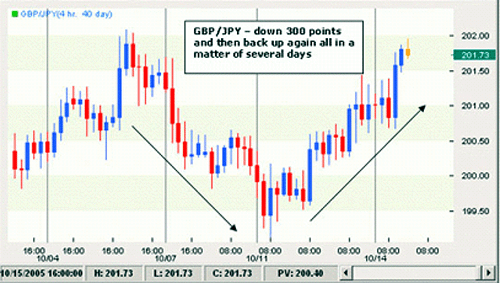Historical Perspective
The Principles of Goodman’s Swing Count System were informally set forth in a series of annotated commodity charts from the late 1940’s to the early 1970’s. These trading studies simply titled ‘My System’ were the work of Charles B. Goodman and were never published.
I met Charles Goodman at the Denver, Colorado offices of Peavey and Company (later, Gelderman) in the fall of 1971. It was the occasion of my maiden voyage in the great sea of commodity trading (later, futures). In 1971 silver prices were finally forging ahead to the $2.00/ounce level. A 10-cent limit move in soybeans elicited a full afternoon of post-mortems by traders and brokers alike.
The Peavey office, managed by the late and great Pete Rednor employed eight brokers (later, account representatives). The broker for both Mr. Goodman and I was the colorful - and patient - Ken Malo. Brokers, resident professional traders - including Mr. Goodman and the Feldman brothers, Stu and Reef - and a regular contingent of retail customers drew inspiration from a Trans-Lux ticker that wormed its way across a long, narrow library table in the back of the office. Most impressive was a large clacker board quote system covering almost the entire front office wall. This electro-mechanical quotation behemoth made loud clacking sounds (thus its name) each time an individual price flipped over to reveal an updated quote. Green and red lights flashed, denoting daily new highs and lows. Pete, apart from being an excellent office manager was also a fine showman using the various stimuli to encourage trading activity!
Almost everyone made frequent reference to Charlie’s huge bar charts posted on 2 ½ by 4-foot sheets of graph paper, mounted on heavy particle board and displayed on large easels. No one ever really knew what the numerous right-hand brackets ( ]) of varying lengths scattered throughout each chart meant. But there was always a great deal of speculation! The present work finally reveals the meaning of those mysterious trading hieroglyphics.
The quiet chatter of the tickertape, the load clacking of the quote board, the constant ringing of the telephones. The news ticker that buzzed once for standing reports, twice for opinions and three times for ‘hot news’, the squawk boxes and Pete Rednor’s authoritative voice booming, ‘Merc!, Merc!". What a spectacular scene it was! No wonder that this author, then a 21-year old trading Newbie would soon make commodity futures and currency trading his life’s work.
But nothing made a greater impression on me than the work of Charles B. Goodman. He instilled first, some very simple ideas: "Avoid volatile markets when at all possible" - "Trade only high percentage short term ‘ducks’ " - "Sit on your hands, Dad, sit on your hands". It didn’t take long for me to adopt the ultra-conservative ‘Belgian Dentist’ style of trading, that is - "Avoiding losing trades is more important than finding winning trades"
The Belgian Dentist approach carried with me when I developed my famous AI trading system in the 1980’s - Jonathan’s Wave. Even though it generated 48% annual returns with a zero expectation of a 50% drawdown (according to Managed Account Reports) it drove the brokers berserk because it could easily go a full month without making a single trade!
Charlie’s trading advice, I am certain, allowed me to survive the financial Baptism of Fire that destroys most commodity and currency trading Newbies in a matter of months, if not weeks.
Mr. Goodman was to be my one and only trading mentor. Over the decade that followed he entrusted to me many, if not most of his trading secrets. To the best of my knowledge he shared this information on his work with no one else in such detail.
Charlie and I spent hundreds of hours together analyzing the trade studies from My System. We also analyzed hundreds of other commodity, currency and securities charts. Charlie was happy with My System being ‘organized’ in his mind. But as a new generation technical analyst, I was anxious to see it formalized on paper and eventually in source code on a computer. (To be honest this created a small amount of friction between the two of us - Charlie was dead set against formalized systems and believed strongly in the psychological and money management elements of trading.) Notwithstanding, by 1979 I was finally ready and able to formally state the principles of My System. Because of its equal concern for price measurements (parameters) and price levels interacting together (matrices) I originally renamed My System ‘ParaMatrix’. My first investment management company in the mid-1970’s was ParaMatrix Investment Management and I acted as both a registered Investment Advisor (SEC) and Commodity Trading Advisor (CFTC).
Contrary to ongoing speculation, only two copies of my original 1979 ‘Principles of ParaMatrix’ ever existed. I possess both of them. Charlie’s original My System trade studies were mistakenly destroyed shortly after his death in 1984. What remains of them are the 200 or so examples I copied into Principles of ParaMatrix.
The present work, Goodman’s Swing Count System (GSCS), is a reorganized re-issue of Principles of ParaMatrix with updated charts and a simplified nomenclature that I am sure Charlie would have appreciated; "Keep it simple, Dad!" he would always advise. I’ve also expanded on Charlie’s ideas by ‘filling in’ some less formed ideas such as his market notation, or calculus as he referred to it, and a method for charting which I have dubbed Goodman Charting.
Two of Charlie’s less well-defined ideas are NOT included in this work: 1) Dependent/Scaled Interfacing and 2) Time-Based (cyclical) measurements. There are also a number of intra-swing formations I have not discussed.
My own direction in futures and currencies turned in the 1980’s to artificial intelligence (Jonathan’s Wave) and in the 1990’s and today, artificial life and cellular automata (The Trend Machine). In spite of, or perhaps because of these complicated ‘cutting edge’ computer efforts I continue to view Goodman’s Swing Count System (GSCS) in a very positive light. To this day, the first thing I do when I see any chart is a quick Goodman analysis!
GSCS is a natural ‘system’ for pursuing the conservative Belgian Dentist approach to trading, even without the aid of a computer. This article, in fact, could be used to make Goodman analysis without a computer at all! But it is in fact intended as an introduction to the CommTools Analytic Suite GSCS software. That software is intended as a supplemental tool only for doing Goodman chart analysis.
GSCS trade opportunities are as frequent today (perhaps more frequent) than they were 40 or 50 years ago. I believe the system’s foundations have well stood the test of time. Patterns today are no different than they were decades ago - nor are the twin human emotions - Fear and Greed - that create them. GSCS is an excellent method for finding support and resistance areas that no other method spots, and for locating potential turning points in any market. One of its best suits - it can easily integrate into other trading techniques and methodologies.
I would never recommend or advise anyone to use a 100% mechanical trading system, GSCS or any other!
Is it really a ‘system’? Depending upon your perspective GSCS is between 70% and 90% mechanical. The program available from CommTools, Inc (
www.commtools.com) represents the kernel idea of mechanizing perhaps 80% of the system. I now believe attempting to completely code Charlie’s work would be inadvisable.
Mr. Goodman passed away in 1984. It was always his desire to share with others - although as is usually the case with true genius - few wanted to listen. These days we are ever more bombarded ever more cryptic and computer-dependent software programs and ‘black-boxes’. Perhaps now is the time for the simple yet theoretically well-grounded ideas of GSCS to populate.
The publication of this brief work and the GSCS software, I hope and pray, would meet with Charlie’s wishes. His work in extracting an objective and almost geometrically precise (ala Spinoza) trading system out of a simple trading rule (the ‘50% rule’) is most remarkable. It has certainly earned him the right to be included in the elite group of early scientific traders including Taylor, Elliot, Gann and Pugh.
Conforming to the spirit of the original My System, I’ve attempted to keep theoretical discussions and formulations to a necessary minimum. Trade studies in Part 3 of this article must still be considered the crux of GSCS, even though I am pleased with the formalization of most relevant principles in Part 2. The trader weary of theoretical discussions and intrigue will find all the concepts and principles delineated in the trade study examples. Nevertheless, those who invest time in the theory of GSCS will undoubtedly discover an area for further exploration where many new and fresh ideas are waiting to be mined.
In Mr. Goodman’s worldly absence, the responsibility for this work and its contents is solely mine, for better or for worse.
Theoretical Overview and Definitions
The cornerstone of GSCS is the age-old ‘50 Percent Retracement and Measured Move’ rule. This rule, familiar to most traders goes back almost as far as the organized markets themselves. It has been traced to the times when insiders manipulated railroad stocks in the 19th Century.
DIAGRAM 1-1: The 50 Percent Retracement and Measured Move Rule
The first systematic description of THE RULE was given in Burton Pugh’s The Great Wheat Secret. This book was originally published in 1933. In 1973, Charles L. Lindsay published Trident. This book did much - some say too much! - to quantify and mathematically describe THE RULE. Nevertheless, must reading for anyone interested in this area of market methodology. Edward L. Dobson wrote The Trading Rule That Can Make You Rich in 1978. This is a good work with some nice examples. But none of these, in my humble opinion, even scratch the surface, relative to Goodman’s work.
In 1975 a well-know Chicago grain floor trader, Eugene Nofri, published The Congestion Phase System. This small but power-packed volume detailed a short term trading method using simple but effective ‘congestion phases’. While not precisely a work on THE RULE it touched - from a different perspective - some of Charlie’s ideas.
Diagram 1-2: A Congestion Phase
[I mention Nofri’s work also because Charlie was especially taken by its simplicity and because it can work well in conjunction with GCSC. The idea of melding GCSC with a congestion phase approach ought to produce a method of finding those high percentage ‘ducks’ that the Belgian Dentist so much loves! Charlie also felt that Hadady’s work on Contrary Opinion was a natural ‘fit’ especially since the GCSC support and resistance points seldom lie where anyone else thinks they should.]
Still, in the end, it was left for Charles B. Goodman, the great grain trader from Eads, Colorado to extract all the logical consequences from THE RULE and transform it into a robust, almost geometrically precise system.
The logic of THE RULE is quite simple. At a 50% retracement, both buyers and sellers of the previous trend (Up or Down) are ceteris paribus ‘in balance’. Half of each holds profits and half of each holds losses.
Diagram 1-3: A Market Tug of War
The equilibrium is a tenuous one, indeed. The distribution of buyers and sellers over the initial price trend or swing is obviously not perfectly even: Some buyers hold more contracts than other buyers. They have also different propensities for taking profits or losses. Nor does it account for the buyers and sellers who have entered the market before the initial swing or during the reaction swing. Not all of the buyers and sellers from the original swing may be in the market any longer.
Remarkably, GCSC eventually takes all of this into account - especially they buyers and sellers at other price swing levels, called matrices.
Nevertheless, the 50% retracement point IS often a powerful and very real point of equilibrium and certainly a ‘known and defined hot spot’ of which one should be aware. Remember both the futures markets and the currency markets are very close to a zero-sum game’. It is only commissions, pips and slippage that keep them from being zero-sum. At the 50% point it doesn’t take much to shift the balance of power for that particular swing matrix.
THE RULE also states the final (3rd) swing of the move - back in the direction of the initial swing - will equal the value of the initial swing. The logic of this idea, called the ‘measured move’ is seen in the following diagram. At the ‘D’ point one side (in this case the buyers) have won and the sellers are ‘wiped out.’
Diagram 1-4: The Measured Move and ‘Unwinding’
As we have alluded to examples of THE RULE occur at ALL price levels or matrices and many are being ‘worked’ simultaneously in any given ongoing market. This is a critical point. In modern terminology it would be said that price movements are ‘recursive’. Simply stated this means that without labeling you could not really tell the difference between a 10-minute chart and a daily or weekly chart - they all exhibit the same behavior and operate under the same principles of Parameter and Matrix.
The bar graphs below were taken from actual market data. It is functionally impossible to tell apart the time units, with respect to the chart action.
Diagram 1-5: The Markets are Recursive
Now we can begin to informally define SIX of the SEVEN CONCEPTS in THE RULE that Mr. Goodman used to construct GCSC. What had been neglected by previous theorists, users, writers and purveyors of THE RULE was this:
The 50% point is indeed an equilibrium point. As such, the equilibrium must ‘give way’ BUT EITHER SIDE (buyers or sellers) in either a downtrend or an uptrend may prevail at any given matrix or price level.
Goodman realized both the possibilities for a REVERSAL (as in the case of the completed measured move) and a PRICE SURGE. A price surge would be the equivalent to the sellers (in an uptrend) and the buyers (in a downtrend) winning the tug of war within a matrix. In price action this means prices would fall or rise to at least the beginning point of the initial swing!
Diagram 1-6: Price Surge - The FIRST Concept
In other words - the measured move is not a done deal - the 50% retracement (Diagram 1-1a) could also become a ‘V’ or inverted ‘V’ as in the next diagram. The 50% retracement is not a reversal point (necessarily) but should be considered as a ‘point of interest’ where prices may be more likely than randomly to decide whether to continue or reverse.
It may not sound like much, but it is a major discovery.
Clearly price surges are implicit in THE RULE. But they are not visible on a chart unless you are looking for them and unless you are considering the 50% retracement as a ‘point of interest’ and not necessarily a reversal. In fact, most practitioners perceive a price surge as a failure of THE RULE!
Even more importantly, Goodman discovered the implications of THE RULE occurring simultaneously at all price levels. I remember EXACTLY the day and place when Charlie showed me this one - it hit me as truly a grand revelation on the markets!
Diagram 1-7: THE RULE at Multiple Levels (Matrices) of Operation - The SECOND Concept
Here you are: The initial (primary) trend and secondary (reaction trend) as well as reversals (measured moves) and surges are relative to price matrix context. What is one thing in one price matrix may well be its opposite in a higher (or lower) matrix.
(It’s true - Elliot Wave Theory contains the same concept. But with GCSC you can tell BEFORE (in many instances) which it is. In Elliot you can only tell AFTER. GCSC is a predictive system, while Elliot - grand and elegant as it is - is primarily a descriptive system.)
All Price Matrices (levels) - in theory - are part of a larger price matrix,
All Price Matrices composed of smaller price matrices
Of course there is the practical limitation of the smallest possible fluctuation.
Besides Reversals and Surges GCSC matrix concepts include Domination and Generation.
Clearly prices do not always seem to find any kind of equilibrium at the 50% retracement price area. Or, so it may seem. This leads to the third Grand discovery:
The extent a price swing overshoots or undershoots its ideal 50% retracement that price value will be ‘made up’ on the next price swing within the matrix.
Now THIS is the trading rule that can make you rich!
For example, if prices fall only 40% of the initial trend and reverse, the measured move will actually be either 90% or 110% of the measured move point and value of the primary (initial swing in the matrix. The 10% difference - GCSC holds - MUST be made up eventually. This is the concept of Compensation.
Diagram 1-8: Examples of Compensation within a Matrix - The THIRD Concept
Furthermore: If the difference is not fully made up in the final price swing of a matrix the cumulative ‘miss’ value will carry over through each price subsequent price matrix until it does. This is the concept of Carry Over. A ‘carryover’ table is used to add and subtract cumulative carry over values until they cancel.
Diagram 1-9 Carry Over - The FOURTH Concept
When no Carry Over remains, the price matrix is said to have ‘cleared’ or ‘cancelled’. This is the GCSC concept of Cancellation. Cancellation is critical to finding GCSC support and resistance points and other chart ‘hot spots’ where something much less than random is likely to occur.
Diagram 1-10: Cancellation - The FIFTH Concept
The exact method for these important concepts is more fully described in this article, Part 2.
We can now get an early glimpse of what the strange brackets on Charlie’s charts were all about.
Diagram 1-11: Meaning of the Brackets Revealed
Charlie had even more ideas:
The importance of a ‘hot spot’ in relationship to its likelihood of being an important point of support or resistance, reversal or continuation, increased when two or more price matrices cancel at the same price or same price area. This is the key concept of Intersection. There is no analogous concept in Elliot, the most common ‘competitor’ to GSCS. Intersection makes GSCS much more objective and testable than other swing systems.
Diagram 1-12: Intersections - The SIXTH Concept
This article has covered micro formations. Charlie also had compiled a dozen or so extremely valuable macro formations - combinations of micros.
I encourage the reader to examine some charts and find simple areas of the intersection of two (or three) matrices. You will see at once that these points are GOLDEN to the trader. If I had, after 30 years of studying the markets one idea to impart it would be to show you an example of a GSCS intersection in 2 or 3 matrices.
Remember, Carry Over is to the same or NEXT larger price matrix. The above are examples of Independent Intersections. That is, each price level Carry Over calculation is kept separate from the others and ‘tallied’ at the end of each matrix. Charlie had also developed (much less precisely) a concept of Dependent Intersections but it is quite complex, beyond the scope of this article and worth of further codification into software at a future date.












